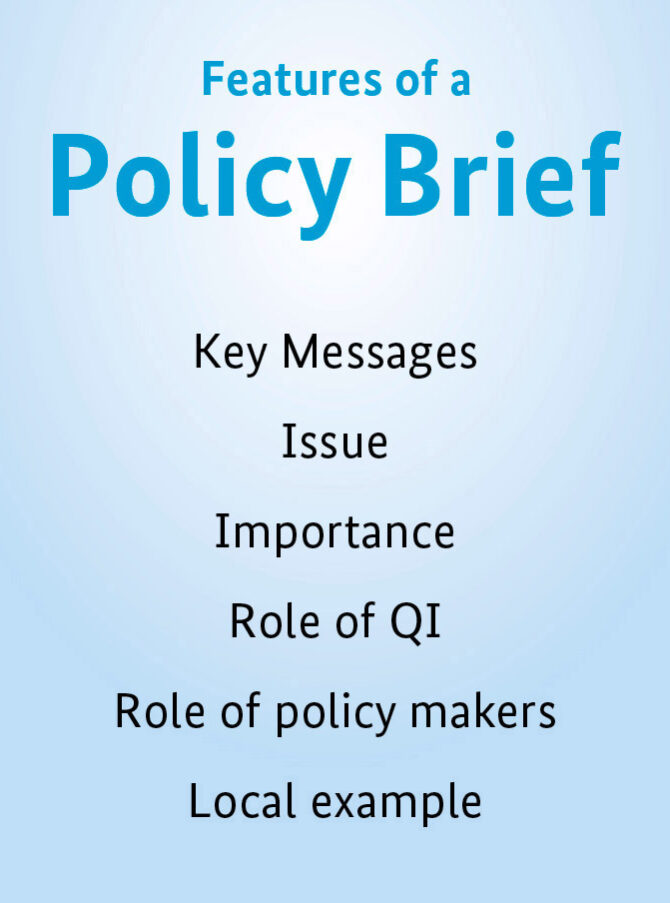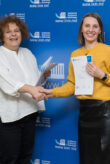Advancing Quality Infrastructure for Green Transformation in the Eastern Partnership
Inspired by the PTB MEDEA project, which introduced policy briefs as an effective “communication openers” for metrology, the PTB Eastern Partnership (EaP) team aimed to demonstrate the value of this communication tool in reaching out to stakeholders and decision-makers relevant for green transformation in the EaP region.
Why Policy Briefs?
Quality infrastructure (QI) topics are often highly technical, making it difficult to capture the attention of decision-makers and other relevant stakeholders with limited time. However, these decision-makers and stakeholders play a critical role in creating the necessary framework conditions for QI development, e.g. by establishing legislation, financing QI institutions, or raising public awareness for quality issues. Whereas long technical reports on QI topics are difficult to absorb, shorter texts align with modern media consumption habits and attention spans. Policy briefs provide concise, action-oriented information, highlighting the role of QI for value creation, productivity, and innovation. The PTB EaP project team piloted policy briefs aiming to illustrate how QI can address these critical fields in the area of green transformation.
Capacity Development and Collaboration in Policy Brief development
Recognizing the need for raising communication skills of PTB experts and partners, the PTB EaP project held a workshop in June 2024. Led by Laurie Winkless, a renowned science communicator and metrology expert, the workshop trained around 50 participants on the purpose and benefits of policy briefs as a communication tool, as well as ways of writing and disseminating policy briefs effectively.
Key characteristics of a successful policy brief include:
- Conciseness: Delivering key messages in a few pages with visuals like infographics.
- Action-oriented content: Providing practical recommendations for decision-makers.
- Accessibility: Simplifying technical language for non-expert audiences.
The EaP project team started with policy briefs on five key topics that emerged in PTB EaP Calidena and QI4GT Fund project activities:
- Let the Sunshine In: Building Quality Infrastructure for Photovoltaic Systems.
- Trust in Carbon Footprint Calculations: Promoting credible, transparent greenhouse gas monitoring and reporting.
- A Greener Pharmaceutical Sector: Quality meets sustainability.
- Green Construction: Empowering sustainable building in the Eastern Partnership.
- Flicking a Switch: Quality Infrastructure for Electrical Products in EaP countries.
Draft briefs were prepared by PTB project experts, refined with input from EaP National Metrology Institutes (NMI), National Accreditation Bodies (NAB) National Standards Bodies (NSB) and other partner organisations, and finalized through peer feedback from other EaP countries.
Dissemination Challenges and Strategies
Effective dissemination is essential for impact. The EaP team is employing strategies such as publishing them on partner and PTB websites, presenting them at Steering Committee meetings and international network events (e.g. EA Communication network) or target specific stakeholders in in-presence briefings. This step strategic and targeted dissemination, focusing on those responsible for QI-related actions.
The project’s experiences show that certain pre-conditions need to be met so that policy briefs can be a powerful tool for communicating QI’s importance to stakeholders and policymakers. Key insights include:
- Involving Local Partners: Policy briefs should be drafted by local partners to ensure relevance and ownership. Collaboration between technical experts and strategy or communication departments form partner organisations is essential for success.
- Building Capacity: Training in technical and scientific communication is crucial for producing high-quality policy briefs.
- Targeted Dissemination: Reaching the right audience requires careful planning and a willingness to communicate technical findings effectively to relevant actors across various hierarchies.
Looking Ahead
The PTB EaP project team plans to expand the use of policy briefs to additional QI topics in its future activities. By sharing these experiences within PTB and with partners worldwide, the project team hopes to inspire others to adopt policy briefs as a communication tool. With QI playing a crucial role in economic development, sustainability, and public well-being, effective communication is vital. Leveraging policy briefs ensures QI gains the attention it deserves from stakeholders and decision-makers.
Image: © Physikalisch-Technische Bundesanstalt





